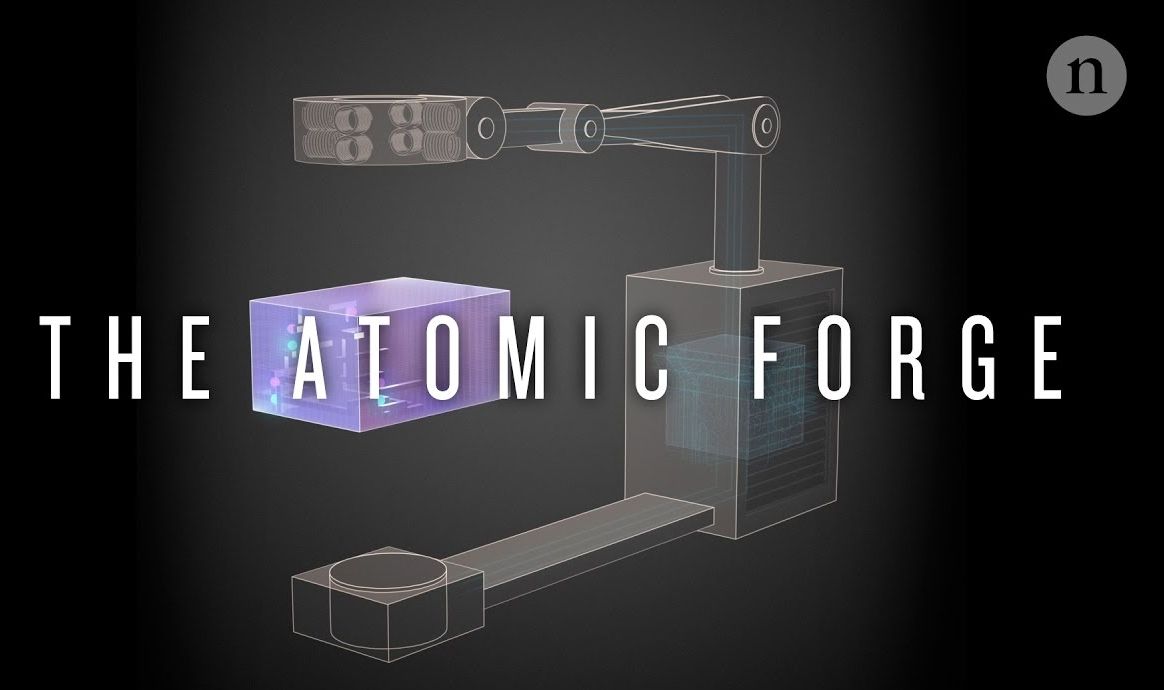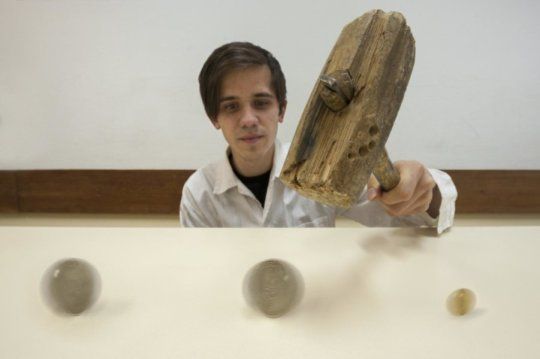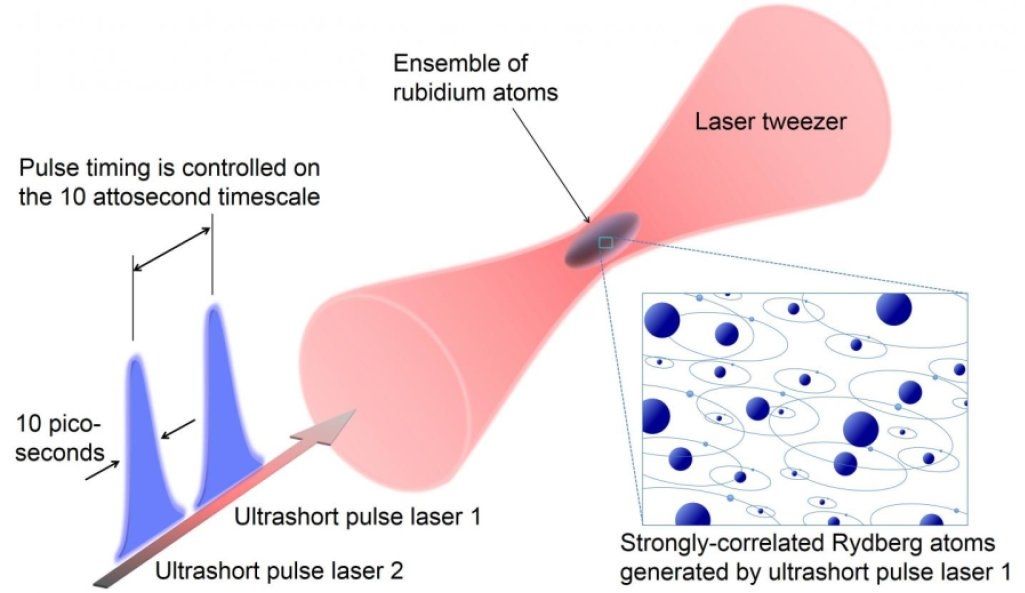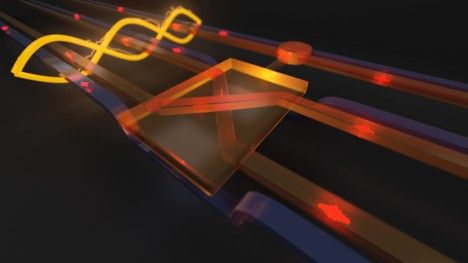There is much to be learned from this process for other areas of technology.
Rethink electron microscopy to build quantum materials from scratch, urge Sergei V. Kalinin, Albina Borisevich and Stephen Jesse.


Quantum and Crystalize formations for data storage.
How can you store quantum information as long as possible? A team from the Vienna University of Technology is making an important step forward in the development of quantum storage.
The memory that we use today for our computers differs only between 0 and 1. However, quantum physics also allows arbitrary superimpositions of states. On this principle, the “superposition principle”, ideas for new quantum technologies are based. A key problem, however, is that such quantum-physical overlays are very short-lived. Only a tiny amount of time you can read the information from a quantum memory reliably, then it is irretrievably lost.
At the TU Vienna is an important step forward has now succeeded in developing new quantum memory concepts. In collaboration with the Japanese telecommunication giant NTT, the Viennese researchers, under the direction of Johannes Majer, are working on quantum storage of nitrogen atoms and microwaves. Due to their different environment, the nitrogen atoms have all slightly different properties, as a result of which the quantum state “ruptures” relatively quickly. However, by specifically manipulating a small part of the atoms, it is possible to bring them into a new quantum state, which has a lifetime which is more than tenfold. These results have now been published in the journal “Nature Photonics”.

In 5 years if you’re looking at QC in your future state roadmap; then welcome to the dinosaur age of technology.
BEIJING: China today launched a 712-km quantum communication line, stated to be the worlds longest secure telecommunications network, which boasts of ultra-high security making it impossible to wiretap, intercept or crack the information transmitted through them.
The new quantum communication line links Hefei, capital of Anhui province, to Shanghai, the countrys financial hub.
It is part of a 2,000-km quantum communication line connecting Beijing and Shanghai, according to Chen Yuao, professor at the University of Science and Technology of China (USTC) in Hefei and chief engineer of the Beijing-Shanghai quantum communication line.

/futurism.com/new-method-could-make-quantum-computers-a-reality-sooner-than-we-thought/
In Brief
Researchers from the Tyndall National Institute have devised a method that would make entangling photons easier, and accelerate our journey towards the quantum computing age.
“We have engineered a scalable array of electrically driven quantum dots using easily-sourced materials and conventional semiconductor fabrication technologies, and our method allows you to direct the position of these sources of entangled photons,” says researcher Emanuele Pelucchi.

A Polish-British team of physicists has constructed and tested a compact, efficient converter capable of modifying the quantum properties of individual photons. The new device should facilitate the construction of complex quantum computers, and in the future may become an important element in global quantum networks, the successors of today’s Internet.
Quantum internet and hybrid quantum computers, built out of subsystems that operate by means of various physical phenomena, are now becoming more than just the stuff of imagination. In an article just published in the journal Nature Photonics, physicists from the University of Warsaw’s Faculty of Physics (FUW) and the University of Oxford have unveiled a key element of such systems: an electro-optical device that enables the properties of individual photons to be modified. Unlike existing laboratory constructions, this new device works with previously unattainable efficiency and is at the same time stable, reliable, and compact.
Building an efficient device for modifying the quantum state of individual photons was an exceptionally challenging task, given the fundamental differences between classical and quantum computing.

If objects in motion are like rainwater flowing through a gutter and landing in a puddle, then quantum objects in motion are like rainwater that might end up in a bunch of puddles, all at once. Figuring out where quantum objects actually go has frustrated scientists for years.
Now a Yale-led group of researchers has derived a formula for understanding where quantum objects land when they are transmitted. It’s a development that offers insight for controlling open quantum systems in a variety of situations.
“The formula we derive turns out to be very useful in operating a quantum computer,” said Victor Albert, first author of a study published in the journal Physical Review X. “Our result says that, in principle, we can engineer ‘rain gutters’ and ‘gates’ in a system to manipulate quantum objects, either after they land or during their actual flow.”


Nice.
Kenji Ohmori (Institute for Molecular Science, National Institutes of Natural Sciences, Japan) has collaborated with Matthias Weidemüller (University of Heidelberg), Guido Pupillo (University of Strasbourg), Claudiu Genes (University of Innsbruck) and their coworkers to develop the world’s fastest simulator that can simulate quantum mechanical dynamics of a large number of particles interacting with each other within one billionths of a second.


A team of researchers from the University of Manchester announced Monday they had taken a significant step forward in the creation of viable quantum computers. In a study published in the latest edition of the journal Chem, the researchers provided evidence that large molecules made of nickel and chromium could be used as qubits — the quantum computing equivalent of the bits used to store and process information in conventional computers.
According to the study, it is possible, at least in theory, to use molecular chemistry to connect these molecules, thereby creating several stable qubits that can then be used to create two-qubit logic gates.
“We have shown that the chemistry is achievable for bringing together two-qubit gates — the molecules can be made and the gates can be assembled,” lead author Richard Winpenny said in a statement. “The next step is to show that they work.”